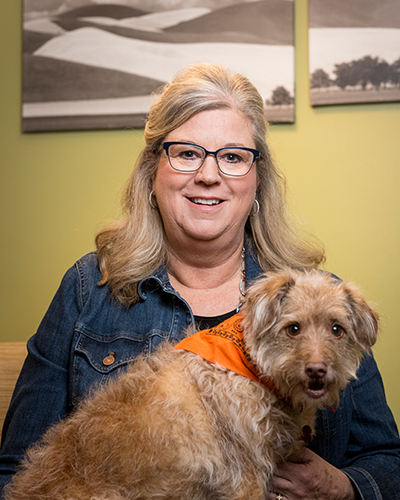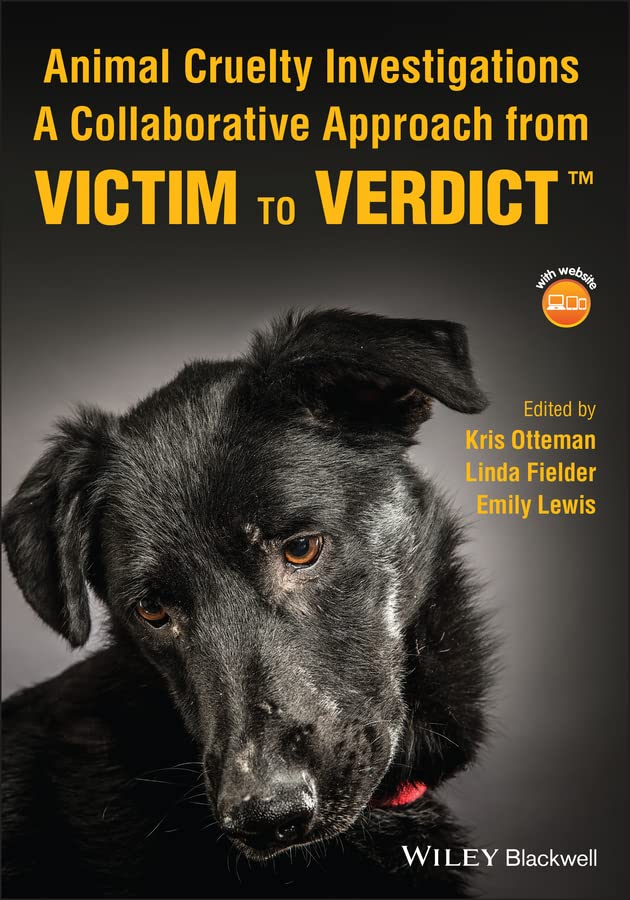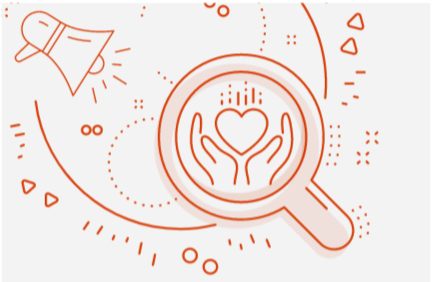What is a veterinarian’s role in investigating animal cruelty cases? That’s the central question that Dr. Kris Otteman, ’82, DVM ’86, has sought to answer for the past two decades. A pioneer in the field of veterinary forensics, she co-wrote a practical guidebook to the subject that was recently adapted into an online certification course for veterinary professionals and students.
But the question wasn’t on her mind for the first 20 years of her career. After graduating from Oregon State University’s Carlson College of Veterinary Medicine, she practiced in her hometown of Klamath Falls for almost nine years before helping found Banfield Pet Hospital, which currently operates more than 1,000 veterinary clinics around the world.
“In both of those scenarios, the private practice or the Banfield practice, I didn’t ever really have animal cruelty on my radar,” Otteman said.
That all changed when she joined the Oregon Humane Society, the Northwest’s largest animal welfare organization.
 Dr. Otteman and Lulu (Photo credit: Karl Maasdam, ’93)
Dr. Otteman and Lulu (Photo credit: Karl Maasdam, ’93)
In 2006, Otteman became its first veterinarian and helped establish a medical center in its Portland headquarters. (She also launched an enduring partnership. All fourth-year OSU veterinary students gain hands-on surgical skills there.)
As excited as she was to enter shelter medicine, in doing so she was also suddenly faced with a world of abuse and neglect.
“Within a week of working at Oregon Humane, I went out on my first search warrant case, and we brought in 148 rabbits.”
Cases continued to crop up. One day, a woman called to say she suspected that her neighbors were starving their dog. During a house call, an officer found Piper, an emaciated black Labrador retriever. They brought her into the hospital so Otteman and the veterinary team could determine what had caused her weight loss.
“The veterinarian’s role there was ruling out cancer, renal failure and other basic things,” Otteman said. “Without the veterinarian’s knowledge of how to do that and write it down, this could go by as: the dog wouldn’t eat, or it had cancer or something like that.”
The conclusion: Piper was indeed starving.
Piper’s plight revealed more abuse in the home. The OHS officer noticed that the couple’s nonverbal 12-year-old daughter also appeared underweight and called Child Protective Services (CPS).
Over the years, CPS had received numerous calls about the girl looking thin and having marks on her, but the conclusion had always been that these were symptoms of undiagnosed developmental disabilities.
After the officer shared the Labrador’s report, the CPS pediatrician saw the case in a new light: like Piper, the girl was starving due to abuse.
Within two days, both were removed from the home and put into foster care. They recovered physically within months.
The link between animal and human abuse became more apparent to Otteman the more she saw.
“Many times when there’s animal abuse, there’s also a family violence situation or some other criminal activity going on,” she said. “My hope is we bring a voice to animal victims of cruelty and neglect. And then that also supports all of the work of law enforcement and social workers that are dealing with complex issues.”
Soon Otteman became the leader of the OHS investigations team, a role she served in until her retirement in 2021. The team includes veterinarians, law enforcement officers, legal experts and hospital and shelter staff with specialty training all working together.
Two of her partners were Emily Lewis, an attorney, and Linda Fielder, an expert in evidence collection and forensics. After investigating hundreds of cases, they decided to capture what they’d learned about the work in a book.
“The idea was to provide a really practical, hands-on guide for the collaborative response to an animal cruelty case,” she said.
Animal Cruelty Investigations: A Collaborative Approach from Victim to Verdict provides examples, forms, templates, checklists and advice on how to leverage team members’ expertise to successfully investigate animal crimes. All of this is vital guidance in a field that’s still establishing itself. The International Veterinary Forensic Sciences Association was founded as recently as 2008.
After publication, the three also started working on a pared-down course with real-world case studies. “We narrowed our focus to the foundational information that we felt all veterinary students and veterinarians could benefit from,” she said.
They developed the course as an online certificate program through Oregon State’s Professional and Continuing Education program.
“The big dream is that all veterinary students ... would graduate with the basics about investigations and the doctor’s role,” Otteman said. “By making this really affordable, we could remove a barrier to completing this.”
Since the course launched last fall, OSU veterinary students have been able to take it at a discounted rate, earning both a professional certificate and an elective academic credit for the Doctorate of Veterinary Medicine program.
The impact has been a new confidence for students preparing to face hard situations — from recognizing signs of neglect and abuse, to collecting and preserving evidence, to understanding the basics of animal criminal law.
“I’ve been involved in a few cases before, and I felt powerless to do anything in my role,” said Sierra Lepiane, a third-year veterinary student who recently completed the course. Now, she said, “I will be able to make a change for those vulnerable patients.”
To learn more about Dr. Otteman’s book and course go to victim2verdict.com.


